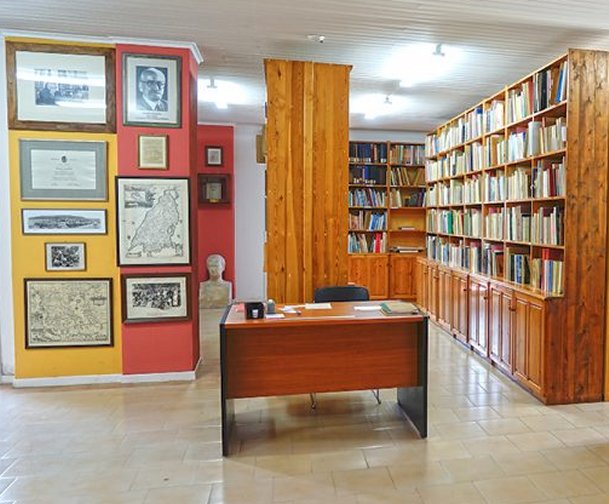Lefkada Town ...
The town of Lefkada is the capital and largest town on the island. It is located in the north of the island and is closest to the opposite coast of mainland Greece. At the entrance to the town is the Venetian castle known as the Castle of Agia Maura. The town is also the capital of the regional unit of Lefkada and the municipality of Lefkada.
 |
 |
Traditional street in the town of Lefkada Town square
Places of interest
At the entrance to Lefkada town is the town's medieval castle, built by the Venetian Orsini in the early 14th century. The castle got its name from the Chapel of Agia Maura, which was located on the same site. This church gave its name to the island of Lefkada for a long period of time. The castle is situated on the edge of the small strait between Lefkada and the opposite coast of Aitoloakarnania and is surrounded by a moat.
 |
 |
The Chapel of Agia Maura in the Castle of Lefkada
Most of the town's streets begin at the bridge that connects the town with the opposite coast and have a radial layout. The main street of the town is Dörpfeld Street, which is now a pedestrian zone and named after the famous German archaeologist Wilhelm Dörpfeld, who carried out important excavations on Lefkada in the early 20th century. Dörpfeld Street is home to some of the town's most remarkable buildings, as well as its best-preserved ancient churches. Many of the town's old churches were built in the 17th century and are Baroque in style. Due to the high risk of earthquakes in the region, almost all the bell towers are made of metal.
In the town, the statues of three important writers born on Lefkada stand out: Angelos Sikelianos, Aristotle Valaoritis and Lefkadios Hearn. The archaeological museum with finds from the Dörpfeld excavations stands out among the sights of the town.
The City Library
The Lefkada Public Library was founded in 1953, is under the Ministry of Education and is located in Zoulinou House, a historically preserved building in the city centre. Its foundation is the result of the efforts of some intellectuals, such as the historian Panos Rodogiannis, the lawyer Takis Mamaloukas and others, who wanted to establish a library in their place and save various relics that were scattered around the island. Initially, books and heirlooms were collected, forming the original core of the library, while today it comprises more than 55,000 books covering the entire spectrum of knowledge and many with local history, representing a cultural heritage for the country.
 |
 |
On the ground floor of the building are contemporary books, manuscripts, old prints, engravings and maps, contemporary works of art by Lefkadian artists and other heirlooms. On the first floor is the collection of post-Byzantine icons and religious relics from the 16th century. The collection is enriched by purchases to meet the information needs of users and by donations from intellectuals and other institutions. The library actively participates in the intellectual life of the region and in cultural events, and has developed a remarkable publication activity, with books related to the region, such as:
- The glossary of Lefkada.
- Ergography of the laographer Pandazi Kontomichi.
- The castle of Agia Maura.
- Album with maps and engravings of Lefkada.
- Two handwritten poems by Angelos Sikelianos.
- Maps from the collection of post-Byzantine icons of Ionic art.
- "Years of light".
- "Calendar 2008".